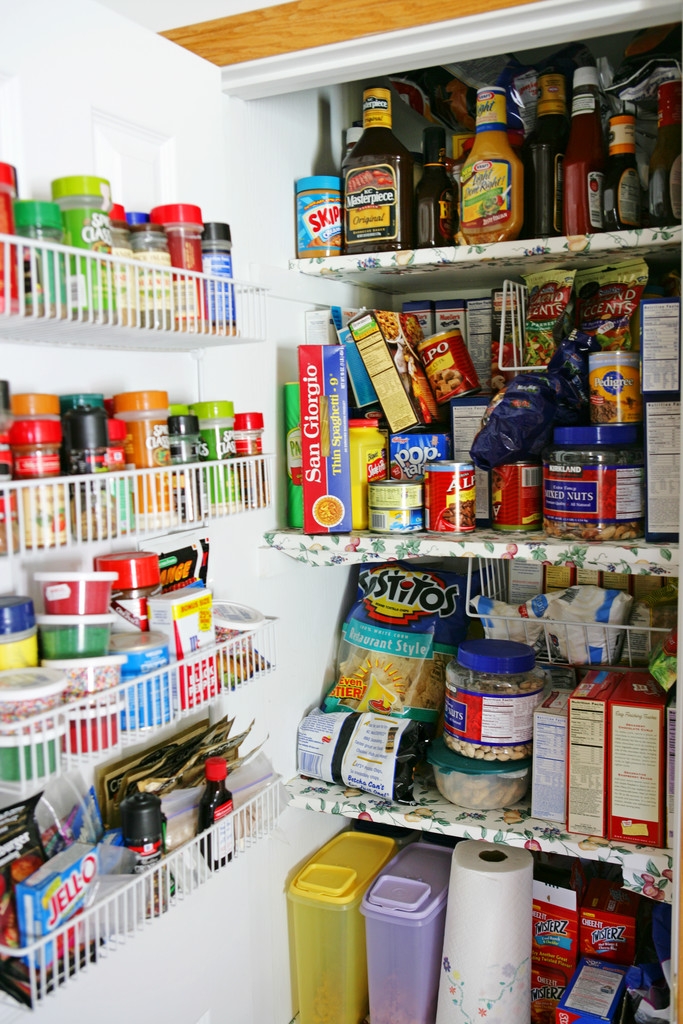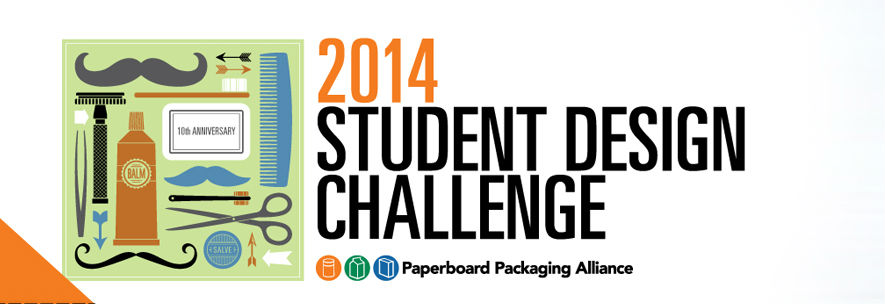Category Archive: Uncategorized
Safety
It doesn’t matter what job you work – whether you are an office worker, working on a manufacturing floor, involved in the transport of goods, or any other profession – there is always the issue of safety. Staying safe at work should be the primary goal of all workers and companies, as the goals of both should be that all workers go home at the end of the day safe, and healthy. Roughly 11 workers die on the job each day in the United States – how can you make sure one of your employees is not added to that toll?
Know Your Data
To know where you need to improve your safety, you need to collect and analyze the hazards, near-misses, and incidents that occur in your workplace. Don’t rely on just on pen and paper, you’ll want to develop a database that is easily searchable and easy to modify as time goes by. A database can be organized and analyzed much more easily.
Engage Employees
The best way to develop plans that are effective is to engage those that the plans affect. Even the closest observer will miss some subtleties that workers may have to deal with, or miss rare events that could be high-danger activities. Get the opinions and input of employees to find out where some of the strengths and weaknesses are for your company.
Develop a Plan and Measure Progress
Once you know the problems you may be facing and the history of your facility, you can work on goals and processes to improve safety. Goals give everyone something to aim for. These could be a reduction in incidents, time lost due to incidents, a reduction of near-misses, or a variety of other measurements. Once you have those goals in place, work on developing processes and programs to reach them. This could include preventative courses, certifications, training, and ongoing safety curriculums. A comprehensive program that addresses the dangers found in your specific industry will be needed, as this is not a one-size-fits-all area.
Safety is everyone’s responsibility, and everyone within a company can work together to make sure we all get home safe at night. Through using resources available, whether through the National Safety Council or other organizations aimed at improving worker safety, we can reduce these incidents. At M&M Box, we have the aim of reducing our incidents to zero, and we hope that is the goal for all manufacturers. After all, a company is only as healthy as its employees.
Share this:
Posted in: Uncategorized
PAPERBOARD PACKAGING TAKEN TO NEW HIGHS OF INNOVATION AND UTILITY: PPA HONORS STUDENT DESIGNERS
Do you pay much attention to the package your goods come in? Most buyers are in such a tizzy over their acquisition that they tear through the box to reach at their treasure, in the process creating mounds upon mounds of waste material just begging to be re-cycled.
The simple solution to this issue is to make packaging aesthetically appealing. To give it that extra something which can make buyers go ‘wow’ and cherish the outside as much as they anticipate what’s within, thus encouraging re-use.
PAPERBOARD IS GREAT BECAUSE?
It is versatile and it is eco-friendly. Over the past few years the awareness around the issue of chemical leaching from plastic debris has skyrocketed. However brands – big and small- continue to enthusiastically churn out plastic wrappers and packets adding to the proliferation of the harmful phthalate chemicals which lead to increased blood pressure and a plethora of other health diseases.
Paperboard is thicker than paper, it is easy to mould into interesting shapes, it is light weight and strong and it comes in different ‘grades’ to serve varied packaging needs. Most importantly it is organic and even if it’s not recycled, it doesn’t pose an imminent threat to the well-being of the planet.
PAPERBOARD PACKAGING ALLIANCE’S EFFORT:
The Paperboard Packaging Alliance (PPA) wishes to pitch paperboard as the preferred packaging material and thus eliminate several issues plaguing the environment. As a testament to its commitment, it organizes an annual Student Design Challenge to inspire fresh eyed graduates to further explore the potential of the humble paperboard.
For the 2014 edition it set forth the challenge of designing a sleek package for men’s products that can double up as a display unit. Commendable is the fact that the mandate required the use of paperboard (instead of plastic) and by factoring in increased utility of package cum display, it looked to reduce raw material wastage.
In a November 3rd ceremony the winners were feted and honoured by PPA. The number one position went to student designers of the Pratt Institute for the wonderfully refreshing and masculine ‘Dash’.
Share this:
Posted in: Uncategorized
Back to School Bliss with Corrugated Boxes

But with a little creativity and diligence, even the busiest student can maintain some order in their school supplies.
Corrugated box partitions are versatile and can often be reused from packaging materials. On top of a desk, in a cubby, or inside of a craft supply box these partitions can keep paints, crayons, markers, tape dispensers, and many more items safely stowed. This is especially helpful for individual paint containers that can leak or spill when being put away after use.
And even the ubiquitous corrugated box can find new life during back to school season. Older students can turn shoe boxes and other boxes of similar size on their sides and decorate them with colorful wrapping paper, or can cover them with paint and self-made designs. These boxes can then be used as shelving for textbooks and notebooks, protecting them from wet rain jackets and dingy gym clothes. Not only that, but it also gives kids a fun after-school activity to get them more excited during their first days and weeks.
Do you have any other creative uses of cardboard and corrugated materials that can help during back to school season? Head over to our Facebook page and let us know!
Share this:
Posted in: Uncategorized
Tags: Back to School Organization, Cardboard, Cardboard Locker Shelves, Craft Supply Organization, Creative Uses of Cardboard
Why a Cardboard Bike Makes Sense

Corrugated material is not only cheap, it’s also incredibly strong. This strength is further augmented by folding or rolling the corrugated sheets. But a bicycle needs to be more than just strong; it needs to be durable. Bikes are pedaled through puddles, rolled over pot-holes, and must be able to withstand harsh weather conditions. Corrugated board on its own isn’t water proof, but a simple coating process takes care of that issue.
Corrugated board is also ideal because there’s so much of it. All of those moving boxes, shipping containers, and protective materials can build up very quickly. Making something totally new from this refuse gives it new life. The resulting bicycle is eco-friendly, and promotes carbon-free transportation.
The fact that this bike is made from such cheap materials is also a major plus. In many cities, housing is expensive enough without factoring in a car or train ticket. And in less developed areas, a bike may be all that separates a person from walking miles each day for water. Having an option that suits little to no budget can truly be a life-saver.
What other unique uses have you found for cardboard or corrugated board? Let us know on Twitter.
Share this:
Posted in: Uncategorized
Tags: Affordable Transportation, Cardboard Bike, Eco Friendly Transportation, Folded Corrugated Sheets
Make Sustainability a Priority on World Environment Day (and Every Day After!)

One easy way to green your business is by looking no further than your suppliers. If your company uses corrugated paperboard for packaging, look for suppliers that offer products made from recycled materials.
Recycled cardboard not only saves trees (60 boxes equals about half of a one-ton pine tree), it also saves energy and landfill space. Using recycled cardboard saves 25% of the energy required to make cardboard from scratch. In addition, it’s estimated that in the average person’s lifetime, they will be able to save 7 trees, 35 gallons of oil, and over 3,000 gallons of water just by recycling all of their moving boxes. Full details can be found here.
You can also incorporate sustainability in your business plan by making small changes within the company. Make an effort to go paperless in the office, trading memos for emails, and encouraging staff to use online banking and direct deposit. Set up recycling bins in high traffic areas for a simple yet effective transition. And of course, make it a habit to turn off all computers, monitors, and other non-essential electronics before heading out at the end of the day.
What other tips do you have to increase sustainability in a business? Let us know in the comments.
Share this:
Posted in: Uncategorized
Tags: Business, Cardboard, Corrugated, Environment, Manufacturing, Recycling, Sustainability
How the Right Packaging (Safely) Preserves Your Food

Recently, studies have linked BPA, a common chemical in plastics and cans, to numerous health concerns. Autism, asthma, obesity, and even cancer have all been linked to exposure to BPA. By making the switch to cardboard or corrugated packaging for food, consumers can reduce their risk from exposure.
Cardboard can be used in most food storage applications. Even soups and other liquids often found in a can are able to make the transition to cardboard by taking advantage of aluminum foil linings inside the package.
And for food that is packaged as a group but kept separate – such as chocolates and other confections – cardboard partitions can keep individual pieces divided without relying on plastic inserts. This can mean the difference between pulling apart candy that has melted together, and being able to enjoy each piece as desired (Donuts and other baked goods could greatly benefit from this, too!).
Cardboard partitions are also ideal because they work well as far as impact protection goes. Fragile wine bottles may travel long distances from the bottling facility to their final retail destinations. Having cardboard divisions protects them from the outside environment, and also keeps the bottles from bumping into each other during transit.
Choosing cardboard packaging and partitions will allow intact delivery and lower health risks. Always make sure to find an FDA-approved cardboard manufacturer for food preservation needs.
Share this:
Posted in: Uncategorized
Tags: BPA, Cardboard, Cardboard Partitions, Corrugated, Food, Food Packaging, Food Partitions, Food Preservation, Packaging
Buy American this Holiday Season
Happy Holidays from us at M&M Box Partitions here in the heart of Chi-town. For us, it’s a time to recap a year that saw its ups and downs and statistical loop-de-loops. We came into this year as a nation determined to aright itself out of a big economic slump; determined to compete better on the global market with other countries that have strong manufacturing and shipping industries. While no-one’s claiming it’s been an easy year for just about anybody in America, things have quietly been picking up steam this year, if not paying off just yet. Jobs across the nation are on the rise. Consumer confidence is back on track. Most interestingly (for us at least), manufacturing has led the comeback all year long. While other sectors of the economy wobble, America’s machinists and warehouse workers have been recovering in good form. You’ve probably seen some of the statistics out there – we won’t repeat them here for you.
But here’s a statistic that may actually surprise you: this December, if everyone in America were to purchase $64 worth of holiday gifts that have actually been “made in America,” that would create up to 200,000 new American jobs. Sure, a lot of them would be retail or shipping-related – jobs to handle to Christmas rush and the excess volume of gifts and packaging – and would therefore be temporary. But there would be other jobs in the mix that would end up becoming permanent.
American manufacturing ingenuity has led this country out of some of its most desperate and dire moments. Manufacturing came roaring back to turn the tide against both the Great Depression and the Axis Powers during World War Two. Before that time, manufacturing helped us claim victory in World War One, and did its part in turning around several great economic recessions in the 19th century. Let’s not forget either the key role that manufacturing played – particularly in the defense sector – in helping the nation stage a comeback from the downturn of the late 70s.
We’ve said it before and we’ll say it again: we’re a Chicago-born, all-American company. We come from a town whose factories, mills, furnaces, and stockyards were – and remain – a source of pride for our nation and the world. We’re doing fine here ourselves as a company. But we’re not talking just about ourselves right now. We think America could be reaching for more than it is right now – and that we as citizens, producers, and consumers have the ways and means of making it all happen. Here’s to buying American-made brands and products this Christmas season. It’s been a rough year for a lot of good people, but we still have a lot to be grateful for – as well as make better.
Share this:
Posted in: Uncategorized
Protecting Your Vino from Breakage with Partitions
Chicago, the city we proudly hail from, has a long history of different immigrant cultures rubbing shoulders together in its crowded neighborhoods and avenues. And one of the richest traditions that Chicago has is its long-standing Italian community. Tens of thousands of Italian workers and their families have poured into Cook County in the past two centuries – indelibly marking the city with their churches, storefronts, and way of life. Part of that way of living has always been a fine appreciation for all things wine-grape. At M&M Box Partitions, we’d like to think we carry within ourselves a whiff of that Old Country tradition in our own partition-making for the wine industry.
Our wine partitioning skills and experience are as formidable as our city’s history. While wine-grape production has long since shifted predominantly out to California and the Pacific Northwest, we still provide some of the sturdiest partitioning available on the market for some of the most trusted names in the wine industry. Our corrugated partitions for wine bottles are as reliable and capable as our rapid turnaround and delivery time. We make it our sure business to get you your partitioning on-time, so you can deliver your vino to whichever part of the country is most in need. And being that the American wine industry is a perpetual bull market (accounting for $33B per year in California alone) both nationally and globally, we know there’s always someone waiting in the wings for a nice glass of Merlot or Cabernet.
So salute from us here at M&M Box Partitions. We promise you two things: never to let your wine break, and that goes double for your bank account! Order from us online or by phone today!
Share this:
Posted in: Uncategorized
Proper Packaging of Lithium Ion Batteries
Recently, the U.S. Postal Service announced that it would suspend deliveries of electronic devices such as iPads, iPhones, laptops, Kindles, and Nooks, etc. to American soldiers serving overseas. There is, to be fair, a rationale behind this move: the lithium ion batteries that power devices such as these can be temperamental and flammable; and if not inspected and packaged skillfully beforehand, can suddenly burst into flames. Poor inspection and packaging services are, in fact, what led to the tragic crash of a UPS cargo plane in Dubai, U.A.E. in recent years. While the Post Office has gone to an extreme in cancelling its overseas bulk air shipments of lithium ion batteries, services like UPS and FedEx will (fortunately for our troops) persist in delivering these goods – albeit with new, stringent packaging guidelines.
In a series of new quality control regulations that are set to take effect on the first of this coming year, UPS has stipulated that all packaging and partitioning companies must adhere to new rules as far as packing lithium ion batteries for air shipment. If the batteries in a given shipment are over the 2.7Wh threshold, one must make sure that the number of partitions in a box doesn’t exceed 8 cells per box. Likewise, each individual partitioning cell must contain only one lithium battery. Finally, the overpack must be firm and resilient, and the material by which the box and partitioning are constructed should be comprised of material that is in-line with shipping electronics, such as ESD anti-static fiberboard. Without these contingencies in place, a package must be marked as “UPS Dangerous Goods”.
Given that M&M has been a long-time player in the shipment of electronic components both domestically and overseas, and given that the international global electronics market stands in the high multi-billions, we would be the last company on Earth to discourage those who make an honest living in shipping lithium ion batteries to cease and desist. On the contrary, we want to pass along the news of the coming safety regulations so that everybody profits – and no accidents come to pass.
Share this:
Posted in: Uncategorized
When It Comes to Food Packaging, It’s Best to Deliver Quickly
Sometimes, when you’re eating out at a restaurant, you want to “ease into” your meal. There’s a whole enjoyment factor about eating at a place where your food isn’t rushed onto a plastic tray for immediate consumption. Before the main course, you’re invited (oftentimes expected) to tuck into an appetizer or two, and enjoy a drink or so.
Contrast this slow, easy-going attitude with the breakneck pace of the worldwide food packaging and delivery industry. Almost any kind of organic substance on Earth is subject to decay over a short period of time if not stored at the appropriate temperature or “cured” using the appropriate treatment. When you’re shipping out meat, poultry, fish, or other perishable products, you want to maintain a temperature that doesn’t rise above 40 degrees Fahrenheit – doing otherwise is to invite bacterial microbes to start chowing down on your foodstuffs before they ever reach a consumer market. Likewise, you want to deliver packaged food as absolutely quickly as possible. The longer the time your foodstuffs are in transit, the greater room for human error or the vicissitudes of temperature. Three or four hours in an overheated truck trailer can mean the difference between fresh and spoiled.
Finally, it’s imperative that you choose the right kind of delivery packaging and partitioning to insure safe quality of food delivery. Not only should a cold source be packed internally within the package, but the package should ideally be comprised of heavy corrugated cardboard. Heavy corrugated cardboard is not only cost-effective, but it’s been well-proven to keep the outside from intruding on the contents of a given package. Being that we’re from Chicago (a town well-known if ever there was for its meat processing industry), and being that we specialize in all things corrugated and packaging, we at M & M know you can rely on our high-quality partitioning to make sure your processed food arrives swiftly to either market or to table. Only then can you start taking it easy!
Share this:
Posted in: Uncategorized





